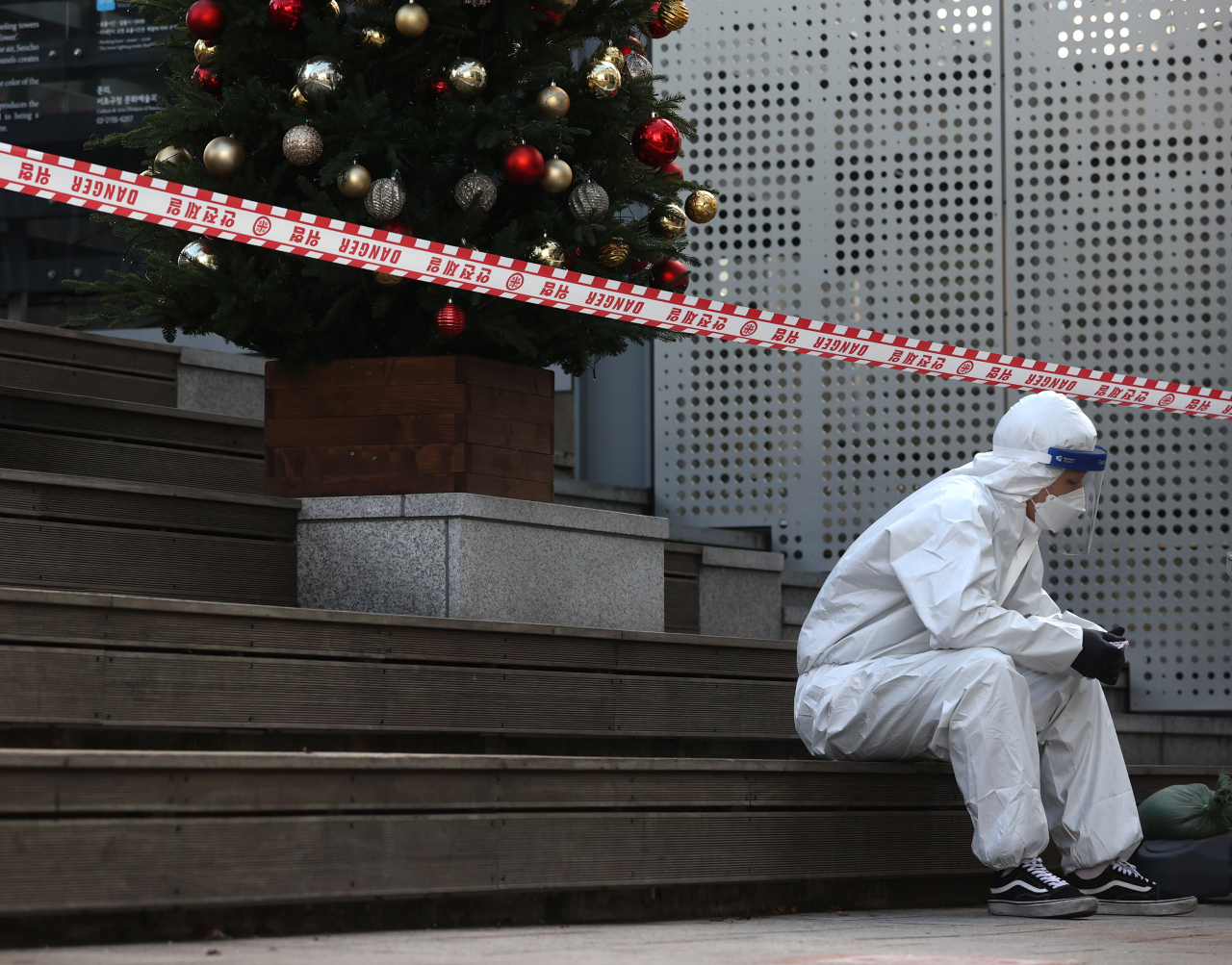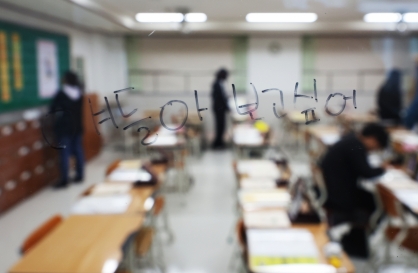[Herald Interview] ‘COVID-19 doesn’t stop for Christmas’
Korea marks worst day yet for new cases on Christmas
By Kim ArinPublished : Dec. 27, 2020 - 14:40

For many front-liners around the country, Christmas was just like any other day in the pandemic.
South Korea counted 1,241 more cases of COVID-19 on Christmas -- the highest number yet in a single day -- according to government statistics.
Internal medicine specialist Dr. Cho Seung-kook, 37, had spent both Christmas Eve and Christmas Day at the hospital working with patients.
He and his team at Wonju Medical Center in Gangwon Province look after around 80 patients in the hospital’s COVID-19 ward.
“Usually Christmas for me and my family is dinner with three or four family friends. This year we’re just sending each other gifts,” he said in a phone call with The Korea Herald late Christmas evening.
Cho couldn’t be there for his two young children, aged 6 and 8. But at the end of the day, he would not want to be anywhere but at the hospital, he said, especially given the current situation.
“COVID-19 is a lonely disease because you have to stay isolated. We (the medical workers) are the only people the patients see,” he said.
Since May, he has cared for “dozens, maybe almost 100” patients with COVID-19, he said. Most recovered. But in a few cases, he was the last person they saw.
Cho said patients being admitted nowadays were sicker, and from all over the country -- especially Seoul, where bed shortages are direst. The hospital took in five more patients on Christmas Eve. Only one was discharged.
“Before the recent spike, we transferred patients who develop more severe symptoms to bigger hospitals nearby. But now, we are having to look after them here because there is no space for them elsewhere,” he said.
Recently a patient who suffered acute respiratory failure stayed at the hospital overnight before he could be transported. His oxygen saturation level had dropped below 70 percent, meaning he required oxygen therapy.
“This patient said he was fine but his chest scans showed he was in much worse condition. That’s the thing about COVID-19. The presenting symptoms do not always match with how much the disease has progressed,” he said.
“It’s bad enough that they are fighting this disease. I’m sorry they have to spend Christmas at the hospital, away from their family.”
But it’s not all bleak. Holiday greetings were exchanged between the staff and the patients. There was cake and smiles. Cho said his Christmas wish this year was good health for all of his patients, and for this crisis to be over.
An anesthesiology resident in his late 20s at a hospital near Seoul worked an extended overnight shift from 7 a.m. Christmas Eve until 8 a.m. Christmas Day.
“To be honest, I didn’t realize it was Christmas,” he said in a phone interview Christmas afternoon, asking not to be named.
Over the 23 hours, he put five patients to sleep for emergency surgery.
“By definition, emergency surgery is one that must be performed immediately. Most of the patients I see have not been screened for COVID-19,” he said.
As a safety precaution, the hospital tests patients for COVID-19 at the time of admission and prior to any procedure. But the test takes hours to produce results. Even the rapid antigen test meant for quick screening can take up to 30 minutes -- which is still too long in an emergency.
Among the patients who came in during his Christmas shift were one with a stomach rupture and one with an eye injury.
“For some patients, every minute can mean the difference between life and death. We can’t wait for the test,” he said.
The outbreak forced him to go through the extra trouble of changing in and out of his protective suit several times a day.
“It can get suffocating and sometimes I feel a bit light-headed. Also I can’t see clearly with the shield fogging up from my breath trapped underneath,” he said.
Once a patient is under anesthesia, the anesthesiologists place a tube down his or her throat to help breathing. Then they stay for a while to check for any signs that the anesthesia is causing problems. So in the operating room, the anesthesiologists typically stay near the patient’s head.
Naturally, the aerosol-generating procedure carries a high risk of transmission.
“I would be lying if I said I wasn’t scared,” he said. He said he has been distancing himself from his parents, out of caution.
Asked what it felt like to spend the holiday at the hospital, he said, “In a time like this, not many at the hospital can really afford to take leave. Pandemic or not, someone has to be at the hospital no matter what day of the year it is.”
By Kim Arin (arin@heraldcorp.com)



















